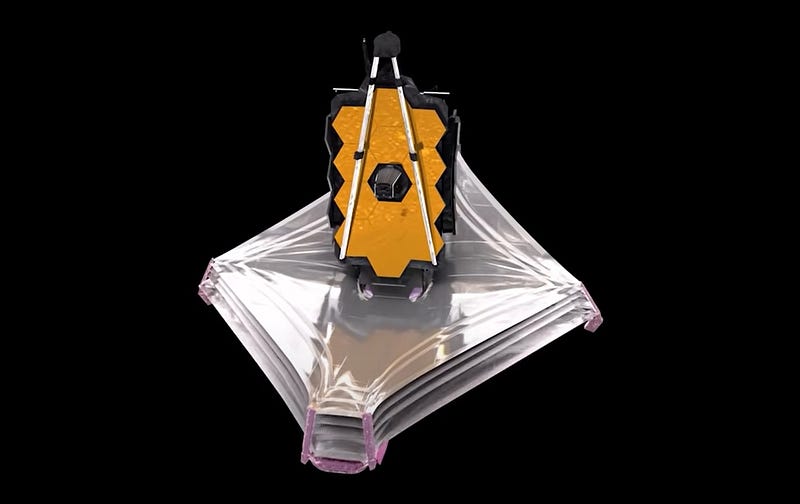Exploring the Cosmos: The James Webb Space Telescope's Journey
Written on
Chapter 1: The James Webb Space Telescope Unveiled
The James Webb Space Telescope (JWST) has officially been deployed and is poised to delve into the mysteries of the universe, revealing secrets that have long eluded scientists.

Designed through a collaboration between NASA, the European Space Agency, and the Canadian Space Agency, the JWST is the largest and most advanced space telescope ever constructed. Its ambitious design includes a significant mirror that is 27 meters long, offering a collection area roughly six times greater than that of its predecessor, the Hubble Space Telescope.
Section 1.1: Deployment Challenges
The telescope's impressive size necessitated the folding of two segments for transport. The first segment was successfully positioned on Friday, while the second unfolded the following morning. As of this Saturday, the JWST has completed its final deployment phase, enabling it to commence its cosmic exploration in about five months.
In the video "We've never seen THIS before - James Webb Space Telescope," viewers can witness the groundbreaking capabilities of this magnificent telescope.
Subsection 1.1.1: Technical Specifications
The JWST's primary mirror, measuring 6.5 meters in diameter, is now correctly aligned, marking a crucial milestone in its readiness for exploration. This mirror is the largest ever sent into orbit, designed to capture the faint light from distant cosmic phenomena. A smaller secondary mirror, deployed successfully last Wednesday, will funnel light to the primary mirror before transmitting it to various scientific instruments.
Section 1.2: The Path Ahead
As the telescope prepares for its final orbit, each hexagonal segment of the main mirror requires precise adjustments. The calibration of scientific instruments is vital for optimal performance as it prepares to explore the cosmos.
Chapter 2: A New Era of Discovery
The JWST is set to enable astronomers to examine celestial objects that are either too distant, too dim, or invisible to the Hubble Space Telescope. This groundbreaking tool will enhance our understanding of a broader universe, significantly advancing the search for exoplanets by analyzing their atmospheres for potential life-supporting conditions.
The video "Galaxies Existed Before The Big Bang" explores how the James Webb Telescope has already identified 15 peculiar galaxies beyond our current understanding.
Final Thoughts
The James Webb Space Telescope will allow humanity to gaze further into the cosmos than ever before, uncovering the first galaxies that emerged a mere 200 million years after the Big Bang.
